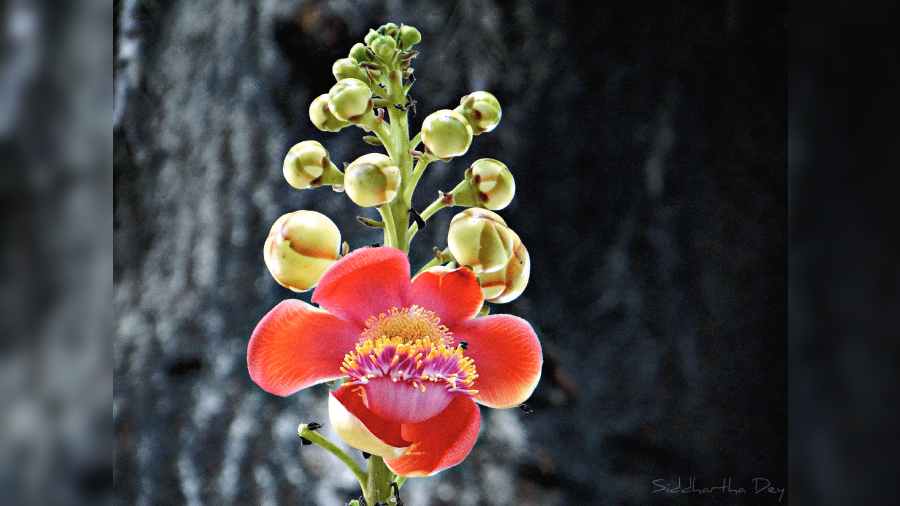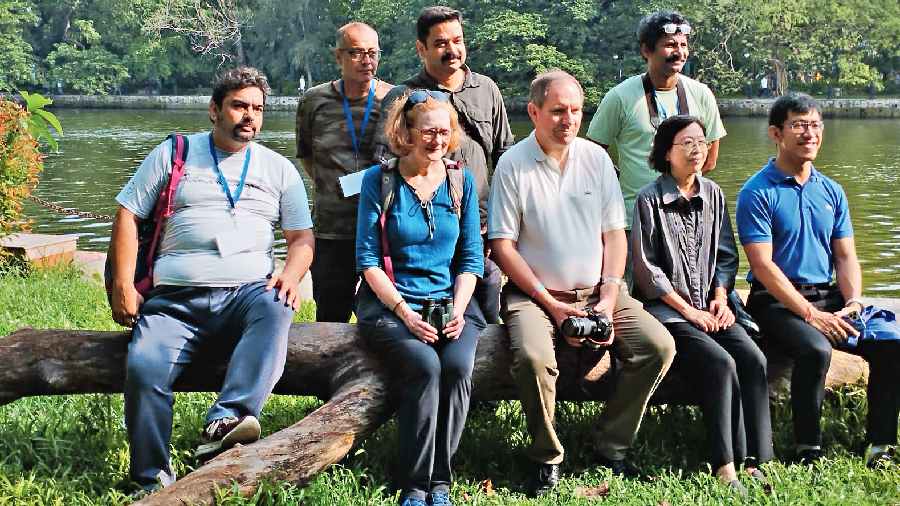A small group of foreigners based in Kolkata toured Rabindra Sarobar in south Kolkata on Saturday morning.
As they walked, they were told about the history of the 192-acre water body and its many facets — glimpses of the rich biodiversity the lake boasts of.
The first stop was a Kanakchaanpa (terospermum acerifolium) tree — the leaves of which are lobed while they are young, and while they mature, the lobes disappear.
The guests were in for a surprise next. As they kept walking, they were passing by a dead tree. But from its hollow stump, an owlet kept staring at the group.
Common myna, rose-ringed parakeet, coppersmith barbet and white-throated kingfisher were some of the birds encountered by the guests.
“Out of the 1,300 bird species in India, approximately 130 have been recorded here,” said Sudip Ghosh, a birding guide from Lenswings, a nature lovers’ and photographers’ platform.
The group — Acharapan Yavaprapas, consul general of Thailand; Nutt S. Salee, vice-consul, Thailand; Nick Lowe, British deputy high-commissioner; and Elizabeth Hamilton, US vice-consul — met near gate 10, near Nazrul Mancha, around 6.30am.
Ghosh and another birding guide, Siddhartha Dey, and a tree guide, Debjit Mukherjee, were among those who accompanied the diplomats.
The wide variety of trees — from Australian black bean to local jamrul or wax apple tree, which is a windbreaker and thus the first line of defence against storms in coastal areas — also impressed the visitors.
The visitors stopped in front of a cannonball tree (Couroupita guianensis), named so because of its cannonball-sized fruits.
As Lowe was looking at the fruits, the curator of the walk, Samrat Chowdhury, recited a few lines from The Charge of the Light Brigade by Alfred Tennyson: “Cannon to right of them, Cannon to left of them.... Into the jaws of Death, Into the mouth of hell, Rode the six hundred”.
“Heritage encompasses both natural heritage and man-made. This walk was meant to explore the wonderful ecosystem and biodiversity that co-exists along with human habitation pressure inside the Rabindra Sarobar lake complex,” said Chowdhry, co-founder and chief mentor of Baul (Bespoke Art & Unique Legacies) Foundation, which organised the walk.

The flower of the canonball tree
The idea of the lake was conceived 100 years ago. In 1920, Kolkata Improvement Trust took up the initiative of beautifying the southern fringes of the city and making it suitable for habitation. The area covered 192 acres and the plan included digging of a large 73-acre lake and beautifying the surroundings by planting trees.
The excavation, which was completed in 1929, was initiated by British engineer Cecil Henry Bompas and the lake was initially called Bompas Lake. Later, it came to be known as Dhakuria Lake. In 1958, it was renamed Rabindra Sarobar.
“I am fascinated by the walk and had no clue that such a wonderful lake with an inclusive eco system existed within the heart of the city. The moment of the walk for me was spotting the white breasted kingfisher among the deep camouflage of leaves,” said Lowe.
“I am truly enriched by this walk as it reminds me of Thailand where such lakes exist,” said Yavaprapas. The walk ended around 8am.
